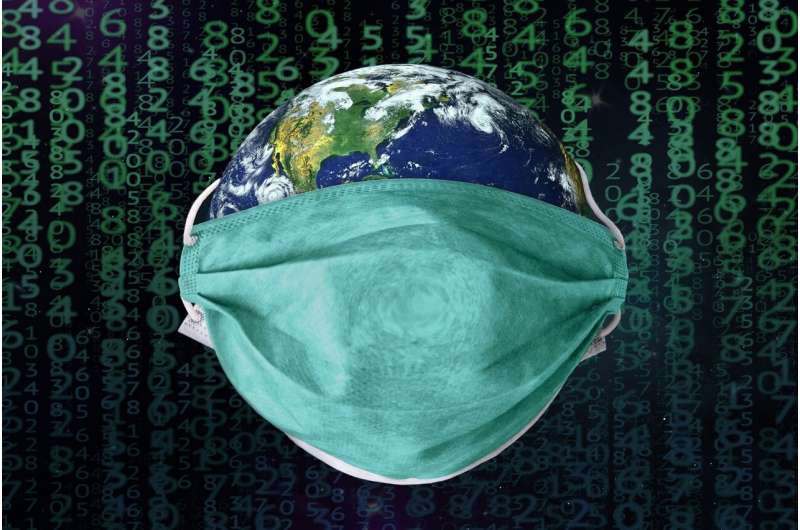
As the acute phase of the pandemic passes, COVID-19 will remain with us as an endemic disease—still around, but a manageable threat. What does this mean, and what must we do to stop it from erupting again?
Even with successful vaccination programs, we can’t expect to completely eradicate COVID-19 from the world. This means that it will continue to circulate in pockets of the global population for many years to come.
COVID-19 is now established, to some degree, across almost the entire globe. For most countries, it will change from an epidemic disease (where cases are rising suddenly) to an endemic disease (where cases continue to appear long-term, with occasional peaks and troughs).
Lots of diseases are endemic, ranging from relatively minor ones like the common cold viruses to major killers like malaria. A disease can become endemic in a small region, like Lassa fever in parts of West Africa, or across the whole world, like chickenpox.
An infectious disease becomes endemic when it doesn’t spread so fast that it surges out of control, but at the same time it isn’t entirely eliminated. This might be because we only develop limited immunity; or because the disease spreads in ways we can’t fully prevent, for example through insect bites or when we breathe or talk; or because the disease is established in wild animal populations where it can’t be wiped out.
In fact, the only human infectious disease that we have managed to completely eradicate is smallpox. This was a long and complicated process and required a global effort, helped by the facts that smallpox only infects humans (and not animals), it has a short incubation period, and we had a highly effective smallpox vaccine. For most other diseases, full eradication is not feasible, but we manage to reduce their spread through measures like vaccination.
The prospects for post-pandemic COVID-19
This is what’s starting to happen to COVID-19 in countries like the UK where the population is increasingly—but not entirely—becoming immune, through a combination of vaccinations and natural immunity that people develop after infection. In some countries, there are lower levels of immunity because fewer people have had COVID-19 and vaccination rates are low. As immunity increases, this will make it harder for the SARS-CoV-2 virus to spread.
If we get to a point where countries regularly have only a small number of COVID-19 cases, that might feel like mission accomplished. But there will still be work to do to keep ourselves protected.
Immunity from previous vaccinations or infections might fade over time. The virus will keep evolving and producing new variants, some of which might spread faster or make people more seriously ill, and they might even reduce the effectiveness of our current vaccines.
An example of major outbreaks starting again, after a disease had been brought under control, is measles in 2018. Vaccination uptake had dropped in several countries, which reduced herd immunity below the threshold that kept the disease in check, and cases surged to an estimated 10 million worldwide.
So, what can we do to manage COVID-19 in the future?
This pandemic is still not yet under control and there’s still a lot we don’t know about COVID-19, including how long a person’s current immunity might last, whether booster vaccinations will be needed and, if so, how often.
But we do already know what the world’s long-term anti-COVID-19 plan has to involve:
- Monitoring the virus. Knowledge is power, and a global program of genomic surveillance, coupled with other epidemiological and clinical data, will tell us when and where the virus is spreading and how it is evolving. Let’s not get taken by surprise again.
- Investing in vaccines and treatments. If new variants appear that behave more dangerously, we need to be ready to find ways to prevent their spread, to treat people who do get infected, and to reduce the overall impact on healthcare systems and societies.
- Ensuring that everyone in the world can access vaccines, treatments and tests. If we have learned one thing over the last year and a half, it’s this: an infection anywhere is a threat everywhere. The more people who have COVID-19, the more chances the virus has to evolve and spread. This means that controlling the virus in any one country will benefit people in every other country.
- Sharing and coordinating resources. Many countries lack the means to implement effective vaccination programs. Out of solidarity and out of self-interest, richer countries need to invest in the ACT-Accelerator, a global collaboration working to ensure everyone, everywhere can access tests, treatments and vaccines. Rich countries that have secured lots of excess vaccine doses can also donate these through COVAX, who will ensure that vaccines go where they are needed most.
Source: Read Full Article
